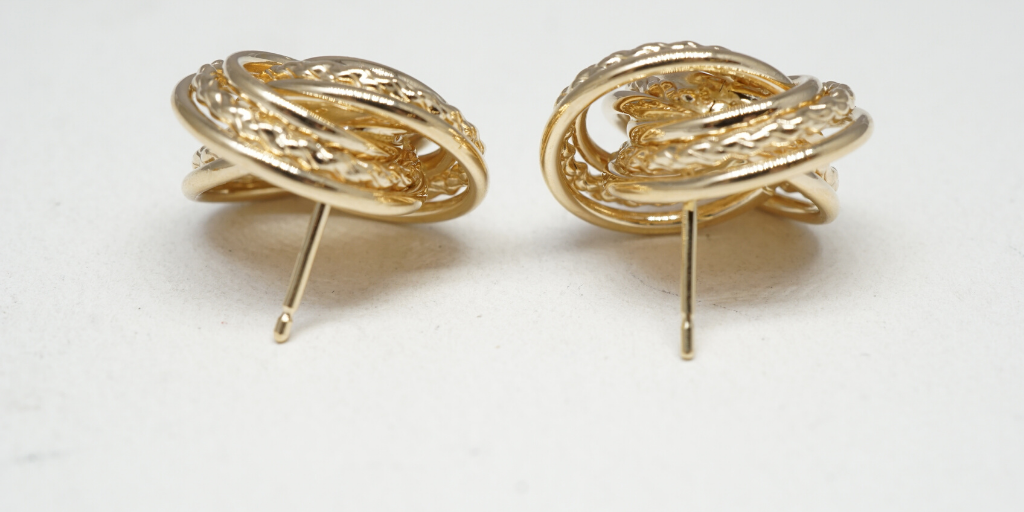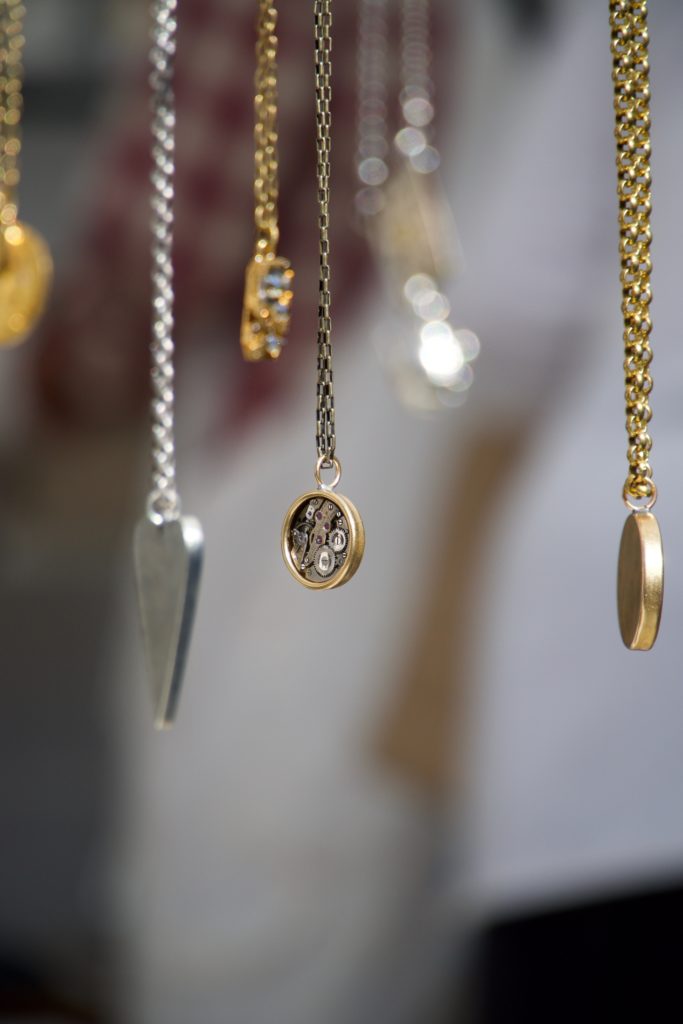Heirloom Jewelry Checklist: Here’s What to Do With Your Inherited Pieces
Written by Anna Currell
November 30, 2022

So you’ve recently inherited some heirloom jewelry, and now you’re wondering what to do with it. If you love the piece as it is, you’re good to go! But if it’s not quite right for you, you have options. Adjust the jewelry to make it match your style, sell the piece to someone who loves it so you can buy something new for yourself, or propose to your partner with it. Whatever you decide to do with your heirlooms, here are the preliminary steps everyone should take to ensure your inherited treasures are in the best shape and ready for whatever’s next.
Step 1: Get Your Pieces Appraised
Jewelry appraisals are a great way to learn more about your inherited jewelry. Appraisals can give you lots of information about your precious pieces — diamond quality, gemstone weight and measurement, material origin, and most importantly, the jewelry’s estimated value. Determining value is important for a few reasons: the first is that the estimated value will guide your heirloom jewelry insurance policy, and the second is that it can give you insight into the right price if you decide to resell the item. It’s a good idea to hire an expert jeweler or gemologist to provide you with a professional appraisal; you’ll get an official document detailing the full assessment of your jewelry and all its composite parts.

An Example Jewelry Appraisal
In addition to an appraisal, you can also get your jewelry metal tested. This is a great way to learn more about the all metals that were used to create your jewelry; some jewelry has a cheaper metal base below a precious metal coating (like gold or silver), while other pieces are made entirely out of precious metals. The more sterling silver or real gold present, the higher your jewelry’s value will be, but it can be hard to tell what’s what without a trained eye and the right tools.
Metal testing is a quick and inexpensive process, but if you just can’t wait to get started on your own then you’ll want to look for metal stamps. Sterling silver is normally stamped with the numbers “925” to indicate its authenticity, and most real gold will be stamped with its karat amount (like “10K” for 10 karats, or “24K” for 24 karats, which is pure gold). If your jewelry doesn’t have any stamps, add metal testing services onto your appraisal to find out for sure.
Step 2: Make Your Heirloom Jewelry Look New Again
Since any jewelry that’s been well-loved and worn often can lose its luster, it’s important to give your heirloom pieces a proper cleaning and a little freshening up before you decide what to do with them. Metal can develop a tarnish with the daily buildup of residue from things like soaps, lotions, or bacteria. Regularly polishing your pieces at home can help prevent that buildup, but we always recommend having your jewelry cleaned professionally every six months to keep it in perfect condition. With heirloom jewelry in particular, you might notice some flaws beyond tarnish and discoloration: the prongs might be loose, the gemstone might look a little cloudy and dark, the enamel could be chipped, or perhaps the pearls have fallen off their string altogether. To be sure that your jewelry is in great shape for its future, get it cleaned, polished, repaired and restored.

A pink sapphire ring before and after the cleaning process
Step 3: Update, Upcycle, or Upgrade Your Jewelry
Because heirloom jewelry is by definition from another era, it doesn't always hold up to modern styles once you inherit it. You may want to give it a makeover to fit current trends or styles. This could look like converting a piece into another type of jewelry; many people prefer to take vintage brooches and turn them into rings or pendants, for example. It could also look like simply matching the piece to the rest of your jewelry collection; if you inherit a gorgeous silver locket but you only wear gold, getting the piece gold-plated is a quick and simple fix.
Don’t want to use the whole piece but love one of its elements? There are also ways to repurpose parts of your jewelry to create something special — like setting a gemstone from your grandmother’s engagement ring in a more modern ring band that your partner will love. There are all kinds of options here, so don’t be afraid to be creative with your approach. If you want to keep the vintage and antique appeal of the original piece (which is very trendy, by the way), that’s cool too; move on to the next step!

This brooch was converted into a ring.
Step 4: Find the Right Fit
You want to be sure that your jewelry fits you well — if it doesn’t, there’s a pretty big chance that it will remain tucked away at the back of your jewelry box, unworn. To make the most out of your precious pieces, take the time to ensure that they fit you in a way that won’t let it fall off. Here are some options for altering your heirloom jewelry:
- Necklace or bracelet chains: If you want a necklace to fall on your collarbone just so, you can lengthen or shorten the chain so it sits in precisely the right place. Similarly, if a bracelet is too snug or too loose around your wrist, you can get the chain adjusted to your desired size.
- Rings: The chances of inheriting a ring that’s exactly your size are pretty rare; lots of factors play into ring size. If a ring is too big and can slide off your finger easily, you could end up losing it. On the other hand (pun intended), if your ring is too tight and difficult to remove, it could be dangerous — injuries called avulsions can occur if your ring doesn’t fit correctly. It’s a little like a Goldilocks situation; it’s important to find just the right fit — not too big, not too small. Find your size and have your ring adjusted accordingly.
- Watches: If you’ve inherited a watch with a chain band, you can get links added or removed to fit your wrist better. A comfortable watch fit will mean something different to everyone, and there’s no right answer. Find the circumference that’s best for you and have your watch resized so you can wear it without worry.

A resized ring, before and after.
Step 5: Wear Your Heirloom Jewelry or Give It a New Home
Now that you’ve gotten your jewelry appraised, repaired, rejuvenated, and resized, you’re ready to either wear it proudly or find it a new home. If you choose to resell it, use your appraisal documentation to determine the right price, and then conduct research to determine whether you want to list it on a site like eBay or take it to a brick-and-mortar shop where you can sell it on consignment or trade it in for cash. If you’re keeping your jewelry, get it insured and keep it safe using your appraisal document as proof of its value. With its fresh new look and shiny exterior, now your heirloom jewelry can live on in your family for generations.
Every piece of jewelry carries a story of some kind. Whatever your heirloom jewelry’s next chapter, honor its legacy by giving it the full treatment it deserves. Quick Jewelry Repairs’ expert jewelers can help you get started with an appraisal so you can get the full picture of your heirloom’s story and value, with all the official documentation you need to treasure and protect it either for sale or for keeps.


